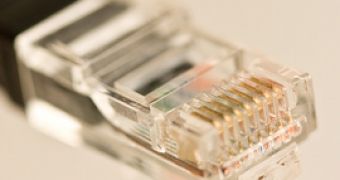While many ISPs are starting to introduce complete fiber-to-home connections, there are still plenty more which rely on aging phone lines. DSL has always had a speed disadvantage over fiber and even over cable connections, but a number of companies are working on making the most out of the pair of copper wires used by DSL.
Nokia Siemens is the latest to boast very high bandwidths over copper wires. The company is saying that it has achieved 825 Mbps over relatively short distances using an increasingly popular technique dubbed "Phantom DSL."
"The company achieved data transmission speeds of 825 megabits per second (Mbps) over 400 meters of bonded copper lines and 750 Mbps over 500 meters," Nokia Siemens announced.
"Nokia Siemens Networks used circuits that involve the creation of a virtual - or ’phantom’ - channel to supplement the two physical wires that are the standard configuration for copper transmission lines," the company explained.
Nokia Siemens is not the first to use the technique, Alcatel-Lucent, another big name in telecommunications, demonstrated 300 Mbps also using Phantom DSL.
Very recently, Hauwei showed off a technology capable of 700 Mbps over the same 400 meters, but it used four pairs of copper wires to achieve it.
"Phantom DSL promises a bandwidth increase of 50-75% over existing bonded copper lines. This prolongs the life of copper networks, delaying the need for fiber rollout and protecting operator’s existing capital investments," explains Nokia Siemens.
While all of these numbers are impressive, they're just lab experiments for now and are still years before being ready for mass deployment. They're also achieved over relatively short distances, too short for most cases.
Advances in DSL speeds could prove most useful for rural areas, where it would be very expensive to deploy fiber connections, but this means that individual lines are going to be a lot longer than the distances used in the lab.

 14 DAY TRIAL //
14 DAY TRIAL //